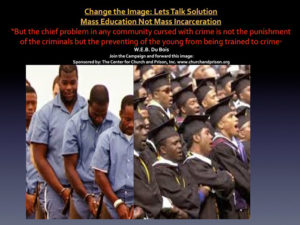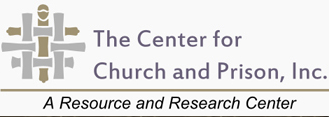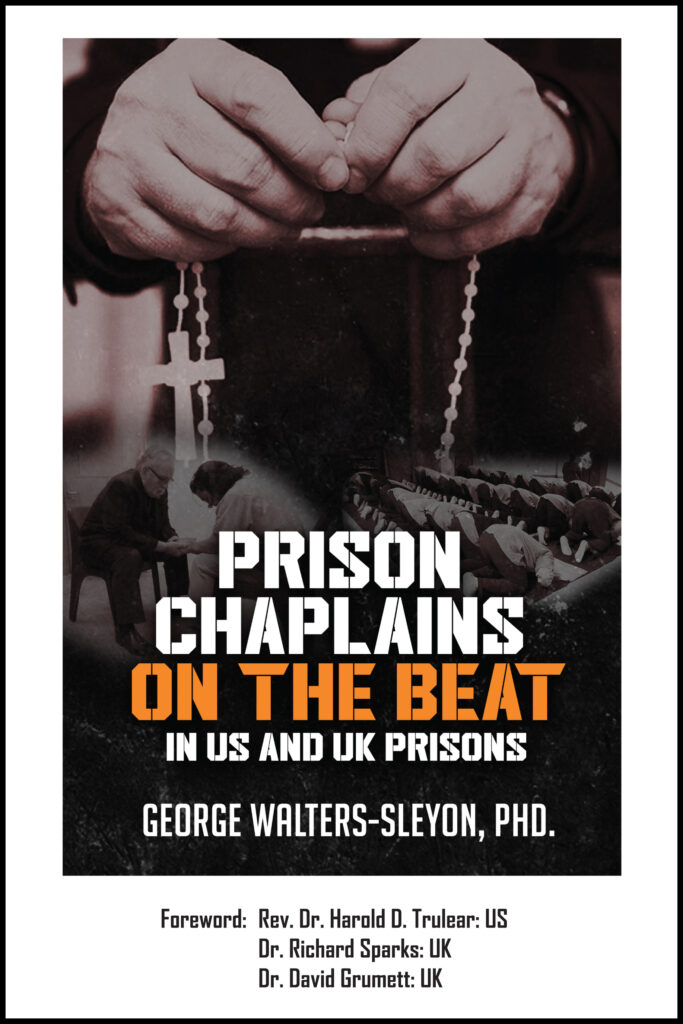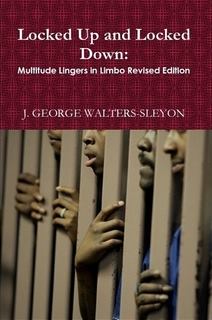Correctional Education & The School-to-Prison Pipeline
 Education
Education
Correctional education and the school-to-prison pipeline
- Summary of School Safety Statistics National Institute of Justice, July, 2017“On the national level, crime at K-12 schools in the U.S., including violent crime, decreased from 1992 to 2013. Though violent crime against students increased from 2010 to 2013, the violent crime rate in 2013 was still lower than in 1992.”
- Girlhood Interrupted: The Erasure of Black Girls’ Childhood Georgetown Law Center on Poverty and Inequality, June, 2017(Adults view black girls as less innocent and more adult-like than their white peers, especially in the age range of 5-14)
- Indicators of School Crime and Safety: 2016 National Center for Education Statistics, May, 2017(This annual report, a joint effort by the Bureau of Justice Statistics and the�|National Center for Education Statistics, presents data on crime and safety at school from the perspectives of students, teachers, and principals.)
- Sentencing Outcomes in U.S. District Courts: Can Offenders’ Educational Attainment Guard Against Prevalent Criminal Stereotypes? Travis W. Franklin, Sam Houston State University, February, 2017“[C]ourt actors may be less concerned (or not at all concerned) with factors typically linked to perceptions of dangerousness (e.g., race, ethnicity, age, sex, detention status) when dealing with offenders of higher educational status.”
- Expanding Access to Postsecondary Education in Prison: Fact Sheet for Corrections Leaders Vera Institute of Justice, January, 2017“Incarcerated people who participate in prison education programs are 43 percent less likely to recidivate than those who do not.”
- Mass incarceration and children’s outcomes: Criminal Justice Policy is Education Policy Economic Policy Institute, December, 2016“It is more common for children of incarcerated parents to drop out of school than it is for children of nonincarcerated parents, controlling for race, IQ, home quality, poverty status, and mother’s education.”
- Highlights from the U.S. PIAAC Survey of Incarcerated Adults: Their Skills, Work Experience, Education, and Training National Center for Education Statistics, November, 2016“Around two-thirds of the survey’s respondents reported that they were working prior to their incarceration: about half of them were employed full-time, with another 16 percent working part-time.”
- Making the Grade: Developing Quality Postsecondary Education Programs in Prison Vera Institute of Justice, July, 2016“[T]his report compiles lessons from the field, offering implementation guidance to programs seeking to develop, expand, or enhance postsecondary educational programming in corrections settings.”
- Future Now: A Process and Intermediate Outcomes Evaluation of the NYC GED Preparatory Program Vera Institute of Justice, November, 2015“Future Now is a GED preparatory program housed at Bronx Community College offering programs tailored to meet each student’s personal and educational needs, prepare them for college, and support students through their first year of enrollment.”
- Suspended Childhood: An Analysis of Exclusionary Discipline of Texas’ Pre-K and Elementary School Students Texas Appleseed, November, 2015“In the 2013-2014 school year, Texas schools issued 88,310 out-of-school suspensions to young children.”
- Locked Out: Improving Educational and Vocational Outcomes for Incarcerated Youth Council of State Governments Justice Center, November, 2015“At least one in three incarcerated youth is identified as needing or already receiving special education services–a rate nearly four times higher than youth attending school in the community.”
- Disproportionate Impact of K-12 School Suspension and Expulsion on Black Students in Southern States University of Pennsylvania Graduate School of Education, August, 2015“In 132 Southern school districts, Blacks were disproportionately suspended at rates five times or higher than their representation in the student population.”
- Turning on the TAP: How Returning Access to Tuition Assistance for Incarcerated People Improves the Health of New Yorkers Human Impact Partners, May, 2015“Expanding access to college education for people in New York prisons would benefit the overall health and well-being of the communities that formerly incarcerated people return to, as well as the individuals who receive the education, and their families.”
- Boxed Out: Criminal History Screening and College Application Attrition Center for Community Alternatives, March, 2015“This means almost two out of every three applicants who check “yes” to the felony conviction question do not complete the application process and are never considered for admission.”
- The School-to-Prison Pipeline in Black and White ACLU of Rhode Island, February, 2015“During the 2011-2012 school year, for example, black students comprised over 16% of suspensions statewide – more than twice their student population.”
- Public Research Universities: Changes in State Funding American Academy of Arts & Sciences, 2015“In general, state spending on corrections has grown much faster than education spending over the last three decades. In eleven states, corrections has now surpassed higher education as a percentage of funding.”
- School Discipline and Restorative Justice (Case Story) Human Impact Partners, September, 2014“If properly implemented, restorative justice could reduce suspensions in the six schools by 20% to 40%. Restorative justice would also lower dropout rates, which in turn would lead to fewer students who end up poor or in prison.”
- Indicators Of School Crime And Safety, 2013 Bureau of Justice Statistics, July, 2014“During the 2009–10 school year, 85% of public schools recorded that one or more crime incidents had taken place at school, amounting to an estimated 1.9 million crimes.”
- How Effective is Correctional Education, and Where Do We Go from Here? The Results of a Comprehensive Evaluation Rand Corporation, February, 2014“…correctional education for incarcerated adults reduces the risk of post-release reincarceration (by 13 percentage points) and does so cost-effectively (a savings of five dollars on reincarceration costs for every dollar spent on correctional education)”
- From Fingerpaint to Fingerprints: The School-to-Prison Pipeline in Utah The University of Utah S.J. Quinney College of Law, 2014“There were 1,230 disciplinary actions in 2011-12, the most recent school year for which data is available.”
- Just Learning The Imperative to Transform Juvenile Justice Systems Into Effective Educational Systems Southern Education Foundation, 2014“…most students come in and out of the juvenile justice systems with little or no real regard for their education.”
- Disparities in Discipline: A Look at School Disciplinary Actions for Utah’s American Indian Students The University of Utah S.J. Quinney College of Law, 2014(In Utah, American Indian students are almost four times (3.8) more likely to receive a school disciplinary action compared to their white counterparts.)
- The Degree of Disadvantage: Incarceration and Inequality in Education Stephanie Ewert, Bryan L. Sykes, and Becky Pettit, November, 2013“Nearly three in ten white male dropouts in the United States can expect to serve time in a state or federal correctional facility in their lifetime, and nearly 60 percent of black male dropouts are imprisoned at some point in their lives…”
- Evaluating the Effectiveness of Correctional Education A Meta-Analysis of Programs That Provide Education to Incarcerated Adults RAND Corporation, August, 2013“On average, inmates who participated in correctional education programs had 43% lower odds of recidivating than inmates who did not, and the odds of obtaining employment postrelease was 13% higher than those who had not participated.”
- Indicators of School Crime and Safety: 2012 Bureau of Justice Statistics, June, 2013“In 2011, about 28 percent of 12- to 18-year-old students reported being bullied at school during the school year.”
- Keeping Kids In School and Out of Court: Report and Recommendations New York City School-Justice Partnership Task Force, May, 2013“During the School Year 2012 there were 882 arrests and 1,666 summonses issued, with over-representation of students of color. Suspension and school arrest patterns are less a function of student misbehavior than a function of the adult response.”
- Handcuffs on Success The Extreme School Discipline Crisis in Mississippi Public Schools Advancement Project, American Civil Liberties Union of Mississippi, Mississippi State Conference of the NAACP, Mississippi Coalition for the Prevention of Schoolhouse to Jailhouse, January, 2013“Extreme and destructive approaches to school discipline not only have directly harmed students and families, but also have caused teachers, law enforcement officials, and community members to have their lives and careers made more difficult.”
- Are Black Kids Worse? Myths and Facts about Racial Differences in Behavior Equity Project at Indiana University, 2013“Such studies have provided little to no evidence that African American students in the same school or district are engaging in more seriously disruptive behavior that could warrant higher rates of exclusion or punishment.”
- A Performance Audit of Inmate High School Education Utah Legislative Auditor General, August, 2012“In fiscal year 2011, over 5,200 inmates were enrolled in adult education, which is about 22 percent of Utah’s entire adult education program.”
- Arrested Future The Criminalization of School Discipline in Massachusetts’ Three Largest School Districts ACLU of Massachusetts, May, 2012“While there are undoubtedly many reasons why there are more public order arrests in Springfield than in Boston or Worcester, it appears that the manner in which Springfield deploys police officers in its public schools is a contributing factor.”
- Juvenile Justice Alternative Edu. Programs Performance Assessment Report School Year 2010-2011 Texas Juvenile Justice Department, May, 2012“The average passing rate for reading/ELA was 68.8% compared to 38.2% for math. The overall passing rates are up from 67.6% in reading/ELA and 34.5% for math in school year 2008-2009.”
- The Post-Release Employment and Recidivism Among Different Types of Offenders With A Different Level of Education: A 5-Year Follow-Up Study in Indiana Indiana Department of Corrections and Ball State University, April, 2012“Offenders who had a lower level of education not only had a higher recidivism rate, but also such uneducated/under-educated offenders were likely to be re-incarcerated earlier than those offenders who had a higher level of education.”
- Pay Now or Pay Much More Later Law Enforcement Leaders support high-quality early education to cut crime and save money in California Fight Crime: Invest in Kids California, April, 2012“Research shows that high-quality preschool programs can significantly reduce felony arrests and incarceration rates and return $10 or more in savings for every dollar invested, with nearly 1/2 of the savings coming from lower prison & crime-related costs.”
- The Education of DC How Washington D.C.’s investments in education can help increase public safety Justice Policy Institute, February, 2012“This national trend is seen in D.C. as the funding for the justice system continues to increase at the expense of public education.”
- Indicators Of School Crime And Safety, 2011 Bureau of Justice Statistics, February, 2012“In 2009–10, about 74 percent of public schools recorded one or more violent incidents of crime, 16 percent recorded one or more serious violent incidents, and 44 percent recorded one or more thefts.”
- Does Federal Financial Aid Affect College Enrollment? Evidence from Drug Offenders and the Higher Education Act of 1998 Cornell University, February, 2012“The ban on Federal financial aid increased the amount of time between high school graduation and college enrollment, affected students were less likely to ever enroll in college, and the law did not deter young people from committing drug felonies.”
- Education Under Arrest The Case Against Police in Schools Justice Policy Institute, November, 2011“[School resource officers] and law enforcement in schools are not needed to keep kids safe, especially when youth pay the price of becoming involved in the juvenile justice system and suffer a lifetime of negative effects as a result.”
- Breaking Schools’ Rules: A Statewide Study of How School Discipline Relates to Students’ Success and Juvenile Justice Involvement The Council of State Governments Justice Center, July, 2011“Nearly six in ten public school students studied were suspended or expelled at least once between their seventh- and twelfth-grade school years.”
- Unlocking Potential: Results of a National Survey of Postsecondary Education in State Prisons Institute for Higher Education Policy, May, 2011“Approximately 71,000 persons (roughly 6 percent of the total incarcerated population in responding states) are enrolled in vocational or academic postsecondary education programs in prisons for the 2009-10 academic year.”
- Misplaced Priorities Over Incarcerate, Under Educate NAACP, April, 2011“During the last two decades, as the criminal justice system came to assume a larger proportion of state discretionary dollars, state spending on prisons grew at six times the rate of state spending on higher education.”
- Law Enforcement Officers in Wake County Schools: The Human, Educational, and Financial Costs Advocates for Children’s Services, Legal Aid of North Carolina, February, 2011(This report examines the effects of the proliferation of police officers in Wake County, NC (Raleigh area) public schools.)
- The Use of Criminal History Records in College Admissions Reconsidered Center for Community Alternatives, November, 2010“A majority (66%) of the responding colleges collect criminal justice information, although not all of them consider it in their admissions process. Private schools and four-year schools are more likely to collect and use such information.”
- The Consequences of Dropping Out of High School Joblessness and Jailing for High School Dropouts and the High Cost for Taxpayers Center for Labor Market Studies, Northeastern University, October, 2009“Nearly 1 of every 10 young male high school dropouts was institutionalized on a given day in 2006-2007 versus fewer than 1 of 33 high school graduates.”
- Reclaiming Michigan’s Throwaway Kids: Students Trapped in the School-to-Prison Pipeline Michigan ACLU, 2009“When school administrators refer some student discipline matters to law enforcement agencies, there is a consequent criminalization of many students whose offenses would otherwise have been dealt with entirely by school officials.”
- Indicators of School Crime and Safety: 2007 Bureau of Justice Statistics, December, 2007“In 2005, 10 percent of male students in grades 9–12 reported being threatened or injured with a weapon on school property in the past year, compared to 6 percent of female students.”
- Education and Public Safety Policy Brief Justice Policy Institute, August, 2007“Graduation rates were associated with positive public safety outcomes. Researchers have found that a 5 percent increase in male high school graduation rates would produce an annual savings of almost $5 billion in crime-related expenses.”
- Literacy Behind Bars Results From the 2003 National Assessment of Adult Literacy Prison Survey U.S. Department of Education, May, 2007“In every age group examined (16-24, 25-39, and 40 or older), incarcerated adults had lower average prose, document, and quantitative literacy than adults in the same age group living in households.”
- Indicators of School Crime and Safety, 2006 Bureau of Justice Statistics and National Center for Education Statistics, December, 2006“The percentage of public schools experiencing one or more violent incidents increased between the 1999-2000 and 2003-04 school years, from 71 to 81 percent.”
- Saving Futures, Saving Dollars The Impact of Education on Crime Reduction and Earnings Alliance for Excellent Education, September, 2006“[A]bout 75 percent of America’s state prison inmates,almost 59 percent of federal inmates, and 69 percent of jail inmates did not complete high school.”
- Hidden Challenges: Juvenile Justice and Education Issues Affecting Asian and Pacific Islander (API) Youth in Richmond, California National Council on Crime and Delinquency, March, 2006“The intent of [this] report is to provide a detailed assessment of the status of Southeast Asian youth in Richmond. To this end, the report contains data from the areas of juvenile justice and education, with relevant demographic data provided for context”
- A Look At The Impact Schools Drum Major Institute, June, 2005“…the Impact Schools initiative has brought increased police and security presence into 22 New York City middle and high schools…”(The report shows that low income, over-crowding and race are as characteristic of the schools as their crime-rates.)
- Education on Lockdown: The Schoolhouse to Jailhouse Track Advancement Project, March, 2005“Examination of the emergence of zero tolerance school discipline policies and how these policies have pushed students away from an academic track to a future in the juvenile justice system.”
- Indicators of School Crime and Safety, 2004 Bureau of Justice Statistics, November, 2004
- Schools and Prisons: Fifty Years After Brown v. Board of Education Sentencing Project, April, 2004
- Current Issues in Correctional Education: A Compilation and Discussion Council of Advancement of Adult Literacy, February, 2004
- Indicators of School Crime and Safety: 2003 Bureau of Justice Statistics, October, 2003
- The Effect of Earning a GED on Recidivism Rates State of New York Department of Correctional Services, September, 2003“[T]hose inmates who earned a GED while incarcerated returned to custody within three years at a significantly lower rate than offender who did not earn a GED while incarcerated.”
- Education and Incarceration Justice Policy Institute, August, 2003
- Correctional Boot Camps: Lessons from a Decade of Research National Institute of Justice, June, 2003
- Derailed: The Schoolhouse to Jailhouse Track Advancement Project, May, 2003“how zero-tolerance policies are derailing students from an academic track in schools to a future in the juvenile justice system”(it’s a huge (13MB) PDF file)
- Borrowing Against the Future: The Impact of Prison Expansion on Arizona Families, Schools and Communities Grassroots Leadership and Arizona Advocacy Network, April, 2003
- Education and Correctional Populations Bureau of Justice Statistics, January, 2003“compares educational attainment of correctional populations to the general population”
- Education not Incarceration Education Not Incarceration, 2003(California Coalition of Teachers, Students, Parents and Citizens)
- Education as Crime Prevention: The Case for Reinstating Pell Grant Eligibility for the Incarcerated Bard Prison Initiative, 2003“This report illustrates the overwhelming consensus among public officials that postsecondary education is the most successful and cost-effective method of preventing crime.”
- Spending More on Prisons than Higher Education Massachusetts Taxpayers Foundation, 2003(has official and inflation adjusted comparison from FY 1968 to 2004)
- Indicators of School Crime and Safety, 2002 Bureau of Justice Statistics, November, 2002
- Cellblocks or Classrooms?: The Funding of Higher Education and Corrections and Its Impact on African American Men Justice Policy Institute, August, 2002“State spending on prisons grows at 6 times the rate of higher education”
- Education vs. Incarceration: A Mississippi case study Grassroots Leadership, May, 2002
- State Correctional Education Programs: State Policy Update National Institute for Literacy, March, 2002
- Three State Recidivism Study Correctional Education Association, September, 2001(Methodologically strong study on the effect of prison education programs on reducing recidivism)
- Schools and Suspensions Self-Reported Crime and the Growing Use of Suspensions Justice Policy Institute, September, 2001“Students Report School Crime at Same Level as 1970s, But Use of Suspension Doubles”
- Changing Minds The Impact of College in a Maximum Security Prison Graduate Center of CUNY & Women in Prison at Bedford Hills CF, NY, September, 2001
- Follow-Up Study of Offenders Who Earn GEDs While Incarcerated in DOCS State of New York Department of Correctional Services, May, 2001(Helping a prisoner get his GED while incarcerated cuts recidivism)
- Indicators of School Crime and Safety, 2000: Crime in the Nation’s schools declined in the 1990’s Bureau of Justice Statistics, October, 2000
- Analysis of Recidivism Rates of Education Program Participants in Virginia Kim A. Hull, et. al., June, 2000
- Opportunities Suspended: The Devastating Consequences of Zero Tolerance and School Discipline Policies Advancement Project & Harvard Civil Rights Project, June, 2000“The report illustrates that Zero Tolerance is unfair, is contrary to the developmental needs of children, denies children educational opportunities, and often results in the criminalization of children.”
- Impact of Educational Achievement of Inmates in the Windham School District on Post-Release Employment Criminal Justice Policy Council (Texas), June, 2000(Windham District is the Texas prison system)
- School House Hype: Two Years Later Justice Policy Institute, April, 2000
- Educational Achievement of Inmates in the Windham School District Criminal Justice Policy Council (Texas), April, 2000(Windham District is the Texas prison system)
- New York State of Mind?: Higher Education vs. Prison Funding in the Empire State, 1988-1998 Justice Policy Institute, December, 1998
- Class Dismissed: Higher Education vs. Corrections During the Wilson Years Justice Policy Institute, September, 1998(California)
- School House Hype: The School Shootings, and the Real Risks Kids Face in America Justice Policy Institute, July, 1998
- U.S. Prison Spending Increases Faster than College Funding 1977-1995 ABC News, July, 1998(Interactive state atlas)
- Is Maryland’s System of Higher Education Suffering Because of Prison Expenditures? Justice Policy Institute, March, 1998
- Education as Crime Prevention: Providing education to prisoners Center for Crime, Communities and Culture, September, 1997
- Trading Classrooms for Cellblocks: Destructive Policies Eroding DC Communities Justice Policy Institute, March, 1997
- From Classrooms to Cellblocks: A National Perspective Justice Policy Institute, February, 1997
- Campus Law Enforcement Agencies, 1995 Bureau of Justice Statistics, December, 1996(600 agencies at 4-year schools with 2,500+ students)
- From Classrooms to Cell-blocks: How Prison Building Affects Higher Education and African American Enrollment in CA Justice Policy Institute, October, 1996(California)
- Literacy Behind Prison Walls: Profiles of the Prison Population from the National Adult Literacy Survey National Center for Education Statistics, October, 1994(the literacy levels of prisoners, by population and offense groups, with comparisons to demographically similar adults not in prison)
- Analysis of Return Rates of the Inmate College Program Participants State of New York Department of Correctional Services, August, 1991(Allowing a prisoner to go to college cuts recidivism.)



